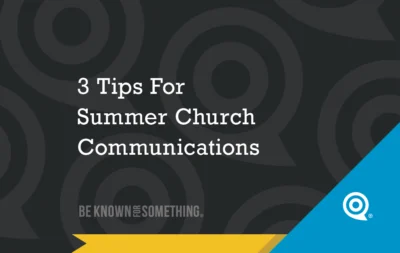
Yikes, People are Listening Differently (3 ways)
I remember years ago, on a summer vacation, my parents stopped near a lake to take a break from driving

I was driving down a city street in a school zone and a Police Officer was directing traffic. He had 8 lanes of traffic and his arms were swinging with various gestures in various directions. I thought he was telling the lane next to me to stop and for me to go. I was wrong.
Fortunately, the police “allowed” me to proceed and no one was hurt.
A church has their website out in the internet fast lane with the intention for people to discover it and be compelled to attend. But instead, some church websites scream STOP even when the words on the page say GO (to the church).
Mostly, your website is for internal communication; but it must be set up properly so that the seeker going to your site feels welcome. You don’t want your church website to be a barrier to their attendance.
Here are 4 ways to make sure you’re signaling the right thing to visitors:

I remember years ago, on a summer vacation, my parents stopped near a lake to take a break from driving

Everyone likes to be found: that’s why Church SEO is important. Especially being found on Google (or Yahoo, Bing, etc.)

When I’ve taught Sunday School classes, I’m always amazed how attendance fluctuated very little each week yet we had different
Discover your thread®. Be Known for Something® relevant and needed. Pastor, control your church brand and be heard again.
– Discover Your Audience
– Build Your Brand
– Communicate & Be Heard
Communicate so your congregation & community pays attention to your website, social media, & email!
We'll never spam you. Unsubscribe anytime.
